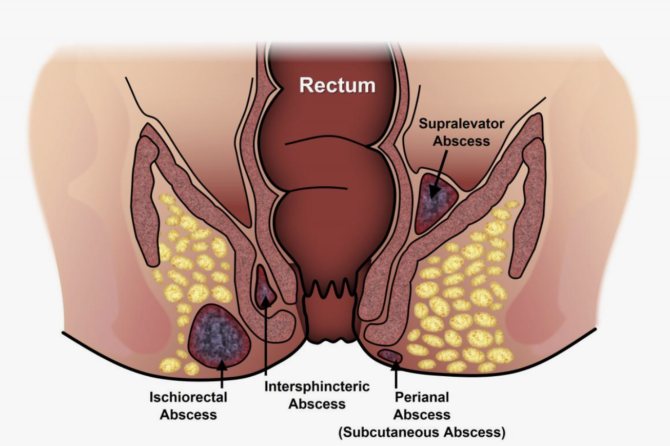
What Are the Types of Anal Fistula?
An anal fistula is an abnormal tunnel formed between the anal canal and the skin in the rectal area. These tunnels are usually inflammatory and present symptoms such as foul odor, discharge, swelling, and even pain. Anal fistulas often develop after an abscess and progress insidiously as the infection spreads. If left untreated, fistulas can expand into larger areas, reducing the patient’s quality of life and complicating the treatment process.
Anal fistulas do not heal on their own and require surgical intervention. Consulting a specialist is crucial to prevent the fistula from spreading and to avoid severe complications, including cancer in some cases.
Types of Anal Fistula
Anal fistulas are categorized based on their anatomical location and the pathways the infection takes. Below are the types of anal fistula:
- Intersphincteric Anal Fistula: This is the most common type of anal fistula. It develops between the muscles surrounding the anus and usually progresses toward the skin surface.
- Transsphincteric Anal Fistula: This fistula crosses the external layer of the anal muscles to reach the skin surface. It has a more complex structure, requiring carefully planned treatment.
- Suprasphincteric Anal Fistula: This type passes through the entirety of the anal muscles and extends to the skin surface. It spreads into deeper tissues and necessitates surgical treatment.
- Extrasphincteric Anal Fistula: Unlike other types, this fistula originates from an inflammatory source outside the anal canal. It is rarer and often associated with bowel diseases.
Treatment of Anal Fistula
Surgical intervention is the primary method for treating anal fistulas. Waiting for spontaneous healing can waste time and lead to further infection spread. During surgery, the fistula tract is opened, the pus inside is removed, and the infected tissues are cauterized.
- Surgical Process: The procedure is usually performed under anesthesia. A specialized tool called a retractor is used to open the fistula, drain the pus, and cauterize the tract.
- Recovery Process: Recovery after surgery is typically rapid. However, temporary weakening of the muscle tissue may occur, which usually resolves within a short time.
Costs of Anal Fistula Treatment
The cost of treating anal fistulas may vary depending on the progression of the disease and the institution where the treatment is performed. Fees in private hospitals or clinics depend on their pricing policies. Accurate cost information requires evaluation by a specialist doctor.
Anal fistula is a condition that negatively affects the quality of life and can lead to more severe health issues if left untreated. Depending on the type of fistula, appropriate surgical interventions can fully resolve this problem. Consulting a specialist upon noticing symptoms accelerates the treatment process and prevents complications.
Leave a reply

Leave a reply